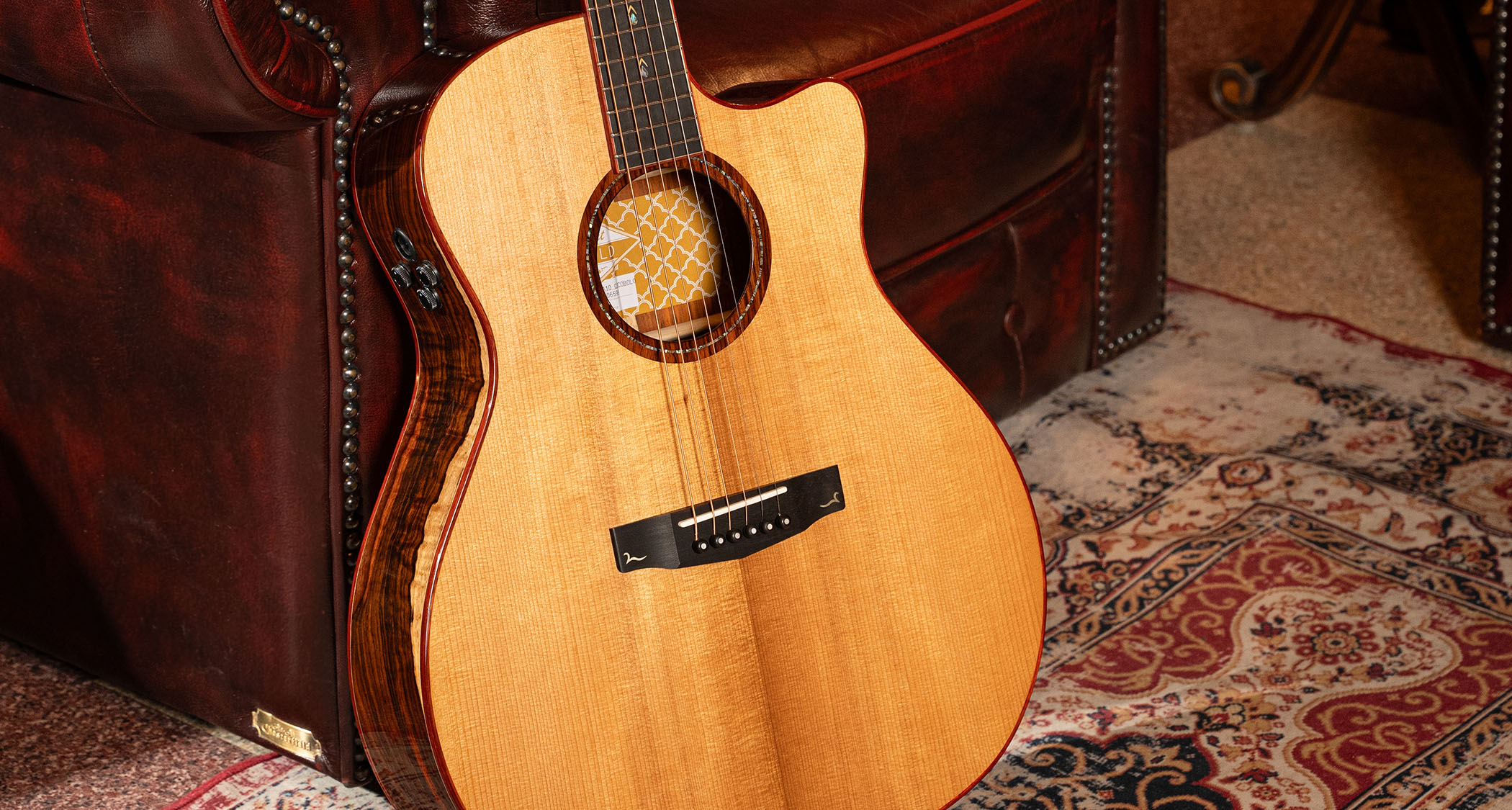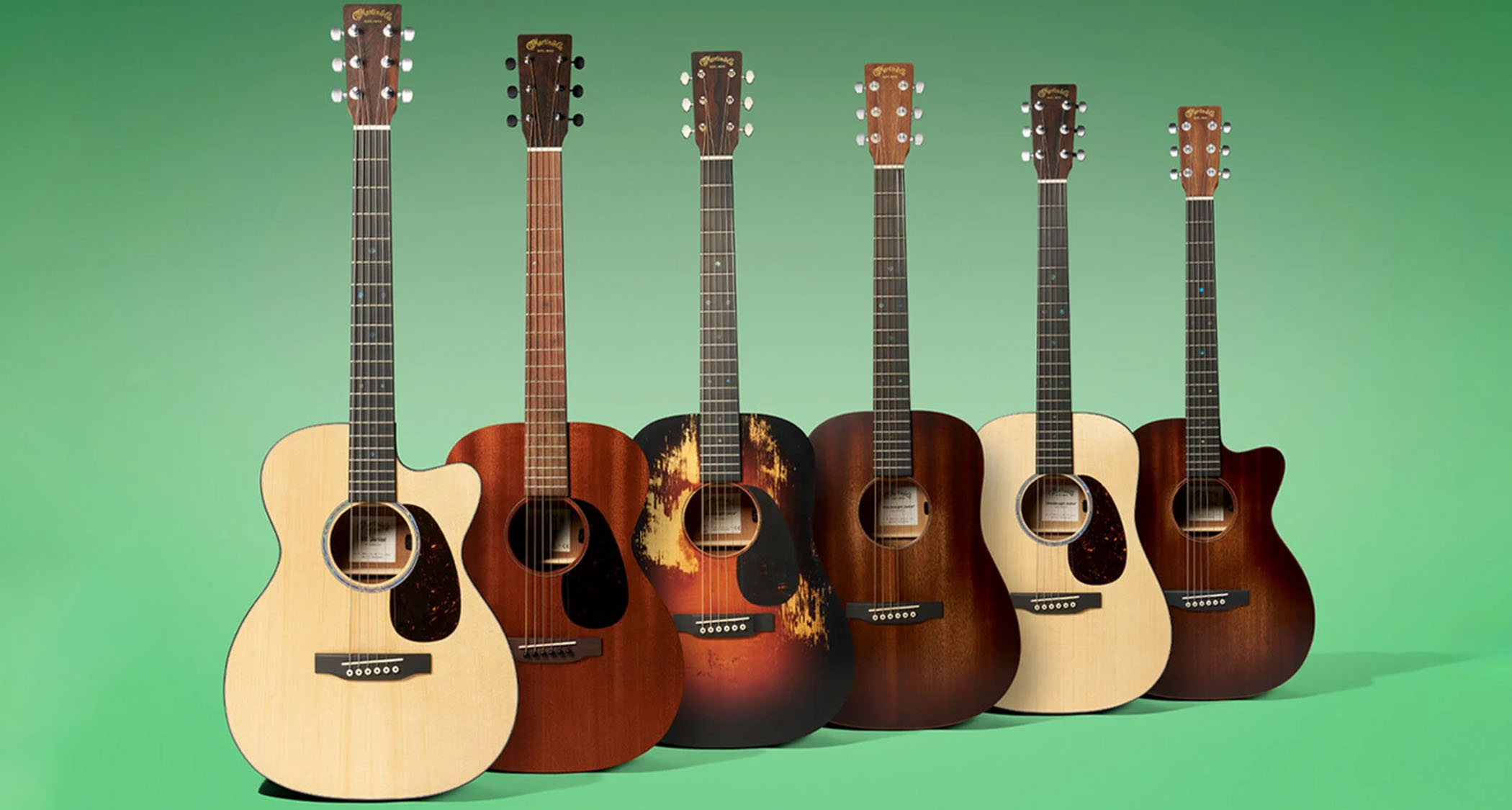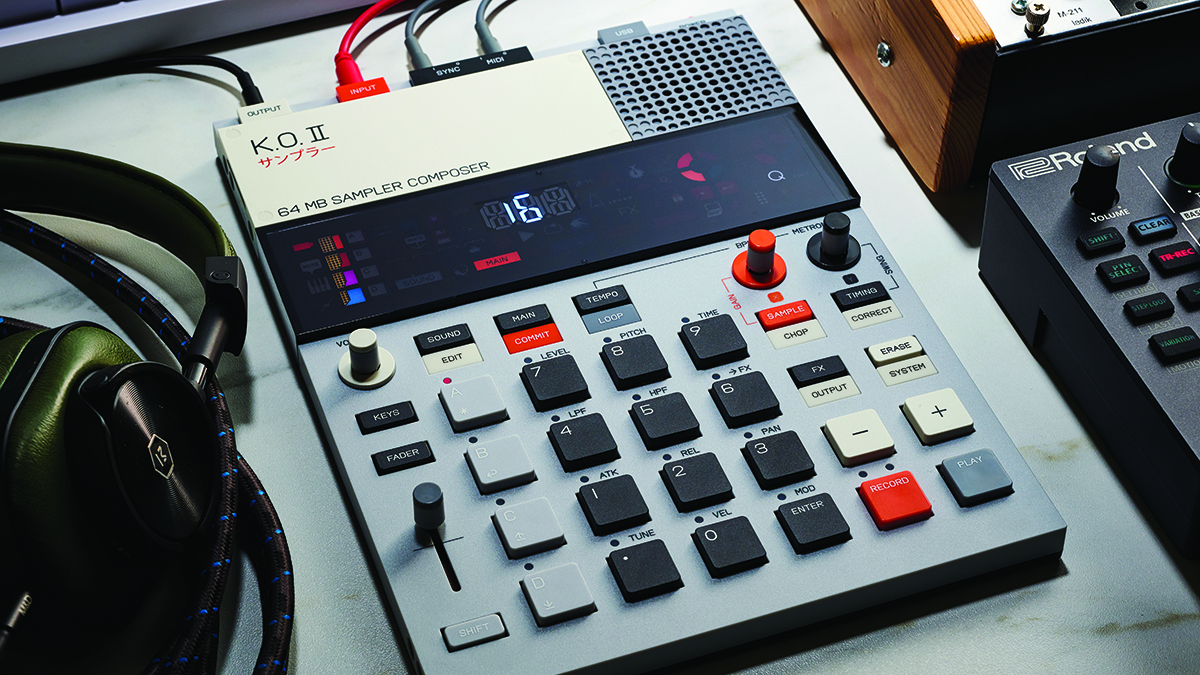Roland TB-303 vs. software emulations: can you tell the difference?
You no longer have to part with thousands of pounds for an ageing second-hand 303 to include that signature filter-squelch in your tracks. But do the imitations stack up against the original?

To those who know, the TB-303 is more than just an electronic instrument in a small silver box.
It’s an era-defining synthesiser and sequencer, which at the point of release in 1981/82, came equipped with a fashionable vinyl carry case; a must for all fashionistas! Why equip a little silver box with such a faux carry case? That has everything to do with the market for which it was designed to cater.
The 303, as it is colloquially known to its friends, was offered as a solution for the discerning gigging guitarist, who didn’t have any bass-playing friends to jam with. Acquiring a 303 for a mere £200 or so, you could plug up to a suitable amp, and hey-presto; bass magic!
Thanks to its onboard sequencer, you could store patterns and songs, making it perfect for pub gigs and the odd bit of karaoke, which was something of a national obsession in Japan.
If you were also lacking drums, the Roland TR-606 was the near-identical drum machine twin, providing a rather beautiful set of analogue drum sounds, alongside the analogue synth architecture of the 303.
Happy accidents
If we were being a tad unkind, but entirely accurate, the 303 has been associated with many happy accidents over its lifetime. While Roland hoped that it would be embraced as a bass-line-generating synth on a budget, there are relatively few instances of this engagement.
One such outing during the 80s, came from the British band Imagination, who utilised the identifiable 303 traits on a host of hits. Just an Illusion and Body Talk both benefitted from a silky bass tone, which glided from one note to the next, thanks to the ‘glide’ operation instigated at the sequencer’s step level.
Get the MusicRadar Newsletter
Want all the hottest music and gear news, reviews, deals, features and more, direct to your inbox? Sign up here.
We can’t even begin to imagine how long the programming must have taken; the 303 shipped with a manual that weighed about the same as the device itself, and it was pretty notorious for its labour intensive note-programming capabilities.
To be blunt, the 303 was a commercial flop. It was relatively cheap to begin with, but towards the end of its technology tenure, you could pick up a new 303 for next to nothing. Used prices fell even lower, and that’s when a curious new breed of producers began to plunder the 303’s depths, for a typical cost of around £25 in the second hand ads.
Given that the 303 was more difficult to program than an early video recorder, further happy accidents emerged via the sequence of random notes, entered into the onboard sequencer
Happy accident number one occurred with the 303’s reassignment to a new genre of music known as acid house. DJ Pierre, from the band Phuture, got his hands on a 303, and started noodling with its sequencer and synthesis capability.
The squelchy and resonant sounds that emerged were exaggerated further, through the application of overdrive and distortion, helping to define the repetitive sound of an era. With the release of the EP Acid Tracks, the architecture and new sound sealed the fate of an exciting and novel genre.
Given that the 303 was more difficult to program than an early video recorder, further happy accidents emerged via the sequence of random notes, entered into the onboard sequencer. As one respected industry pro once commented, “have a play around, and if it doesn’t sound any good, just go again!”
It’s something of a credo for the early sound of acid house and techno, emanating from Detroit, which inspired a post-punk generation to simply get on and do it, with whatever they could lay their hands on.
Antiques roadshow
If you happen to find a 303 in your attic, you could be forgiven for thinking that nobody could possibly want such an outmoded piece of kit, but you’d be wrong. TB-303s regularly change hands for many thousands of pounds, despite an abundance of both hardware and software to emulate the original.
The company that arguably equipped the house genre with all its sonic requirements, Roland, released a digital incarnation of the 303 in hardware form, a few years back.
The size and scale of the redesigned TB-03 were kept much the same, but by placing it in a digital domain, that made it pretty impossible to tell it apart from an original, and without the ageing components to let you down. Moreover, Roland improved its programming workflow, making it easier to use, while maintaining its sonic identity.
This hardware has now been ported to software, allowing us total control of this industry stalwart, in the convenient format of a plugin, as part of the Roland Cloud. Don’t take our word for it! We’ve compiled some loops and phrases from a real 303 and put it to the test against the Roland Cloud software. But which will reign supreme?
303 software emulations
Roland Cloud
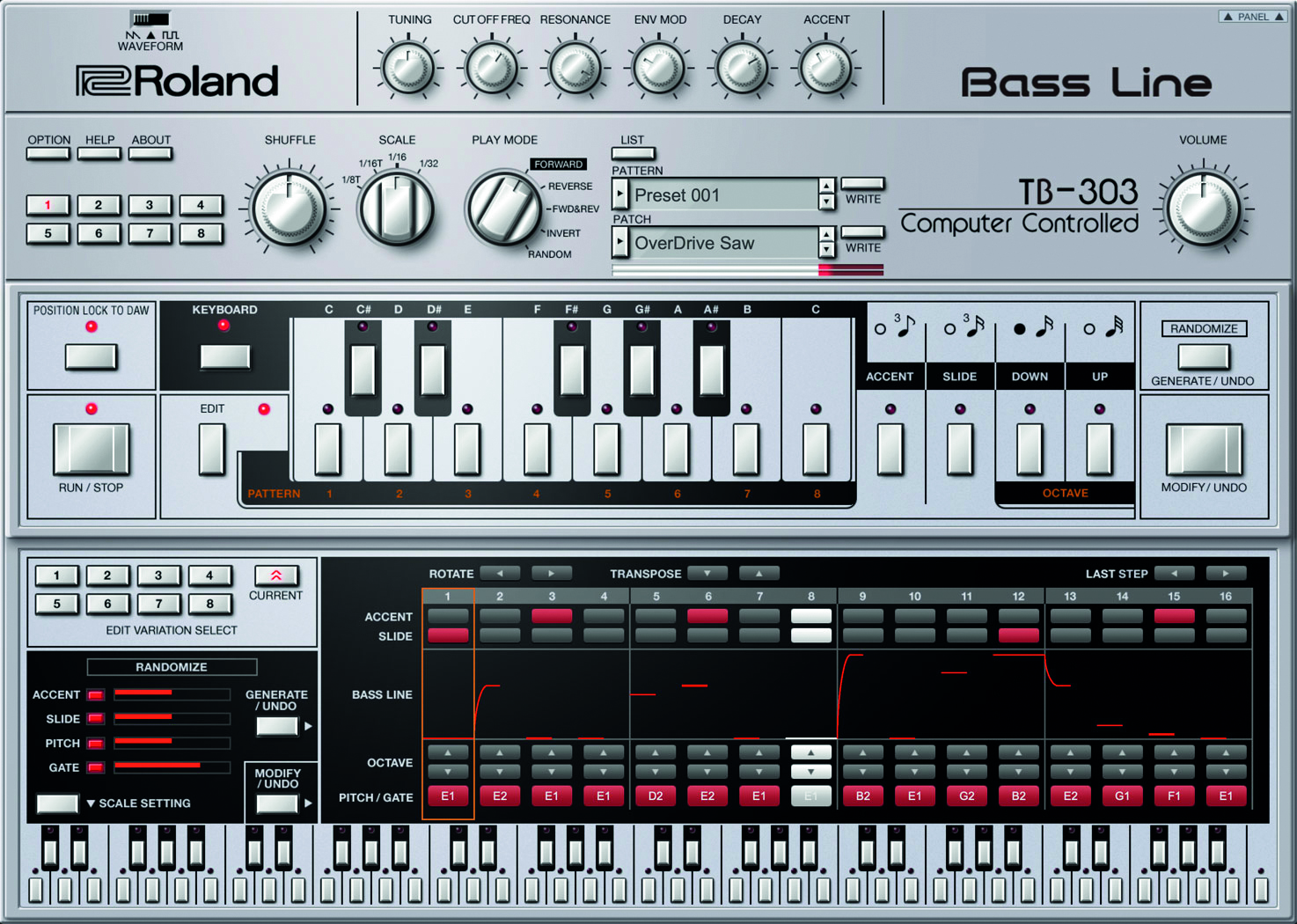
Roland had been asked to reproduce the original TB-303 for many years, and they responded with the amazingly cool TB-03. Residing in their popular Boutique form, the original 303 form factor lends itself perfectly to the Boutique dimensions.
It’s more or less the same, but now with added connectivity, like USB for audio and MIDI, a cool little kick stand, and an internal speaker, should you want to take it on the move.
Roland also improved the sequencer programming, while maintaining a traditional sequencer mode for the original devotees. Finally, they added overdrive, making it sound incredibly familiar from source, along with a backend delay.
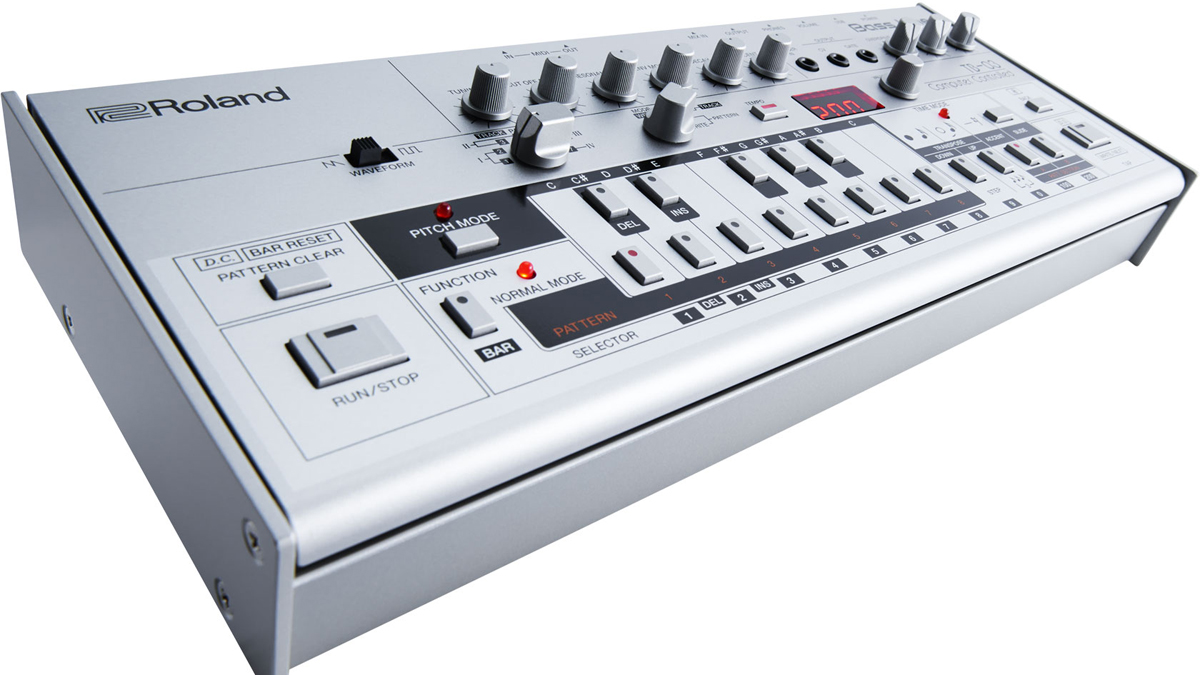
The great news for us desktop-devotees is that this Boutique brilliance now establishes itself as part of the Roland Cloud, allowing access to an improved sequencer mode, which makes exceptionally light work of programming all those 303-style curios, such as accent and slide.
Accessing these programmable step-elements is simplicity itself, thanks to the included elegant editor, which drops open beneath the main sequencer keyboard. This means it’s incredibly easy to see what you’re doing, at the step level. You never have to scroll through individual steps in the same way again.
The Roland Cloud is an exceptional route for placing some of those Roland classics right at the heart of your DAW
Moreover, it sounds exceptional; Roland’s take on fashioning their vintage instruments in software is masterful. As a rule, they like to model their synth-engines to sound like the desired device, before suffering at the hands of component degradation over time.
If you were in a position to line up more than one original 303, you would find that they all sound subtlety different, and Roland explore this territory by modelling the sound on a cross-section of devices, ensuring that the software sounds as you would effectively like it to.
There’s also the inclusion of a Condition pot, which allows you to virtually age your 303’s components. We like that! Like many of the other Roland software clones, it’s a classy product which is well thought out, and sounds pretty amazing.
The Roland Cloud is an exceptional route for placing some of those Roland classics right at the heart of your DAW. For a mere $99 per year, you can activate two of Roland’s plugins, from a very extensive list of classics.
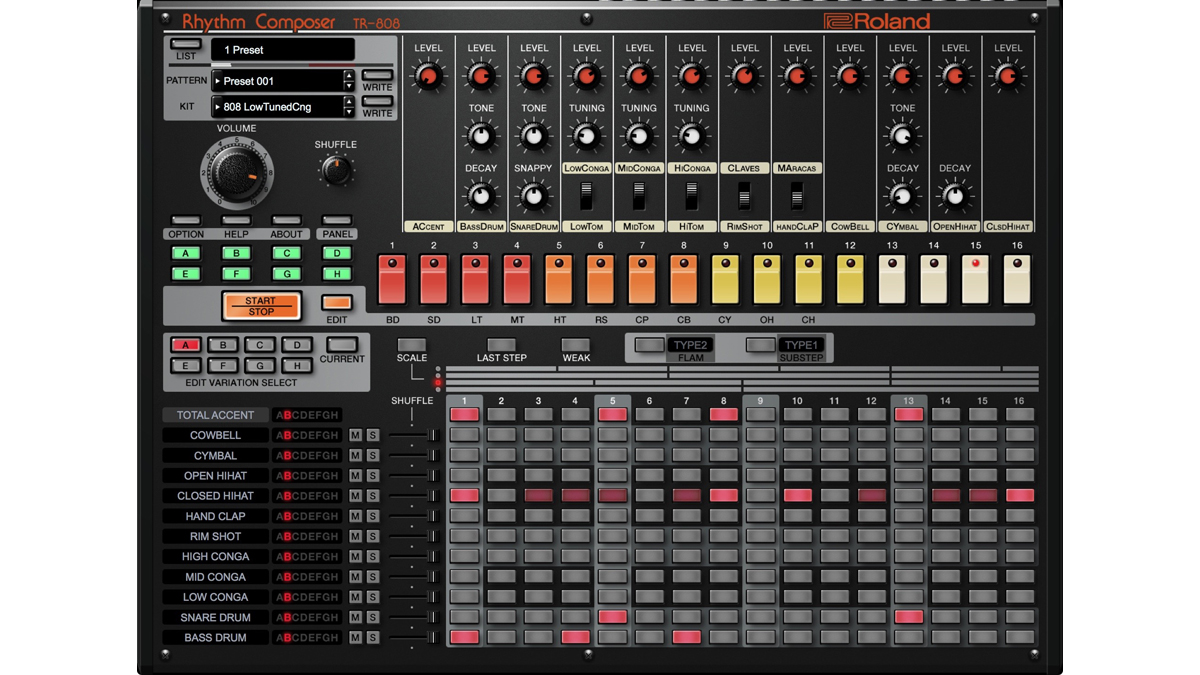
You can also purchase the cloud-based 303 outright as part of a lifetime licence, for $149, or for $199 per year you can subscribe to all of the Roland plugins in their Cloud suite, on a rolling subscription.
If you think you might use these instruments quite a bit, we think that’s a real bargain! Who wouldn’t want to pair a TB-303 with a TR-808 or 909 and throw in a Jupiter 8 and Juno 106 for good measure? Why not!?
D16 Phoscyon
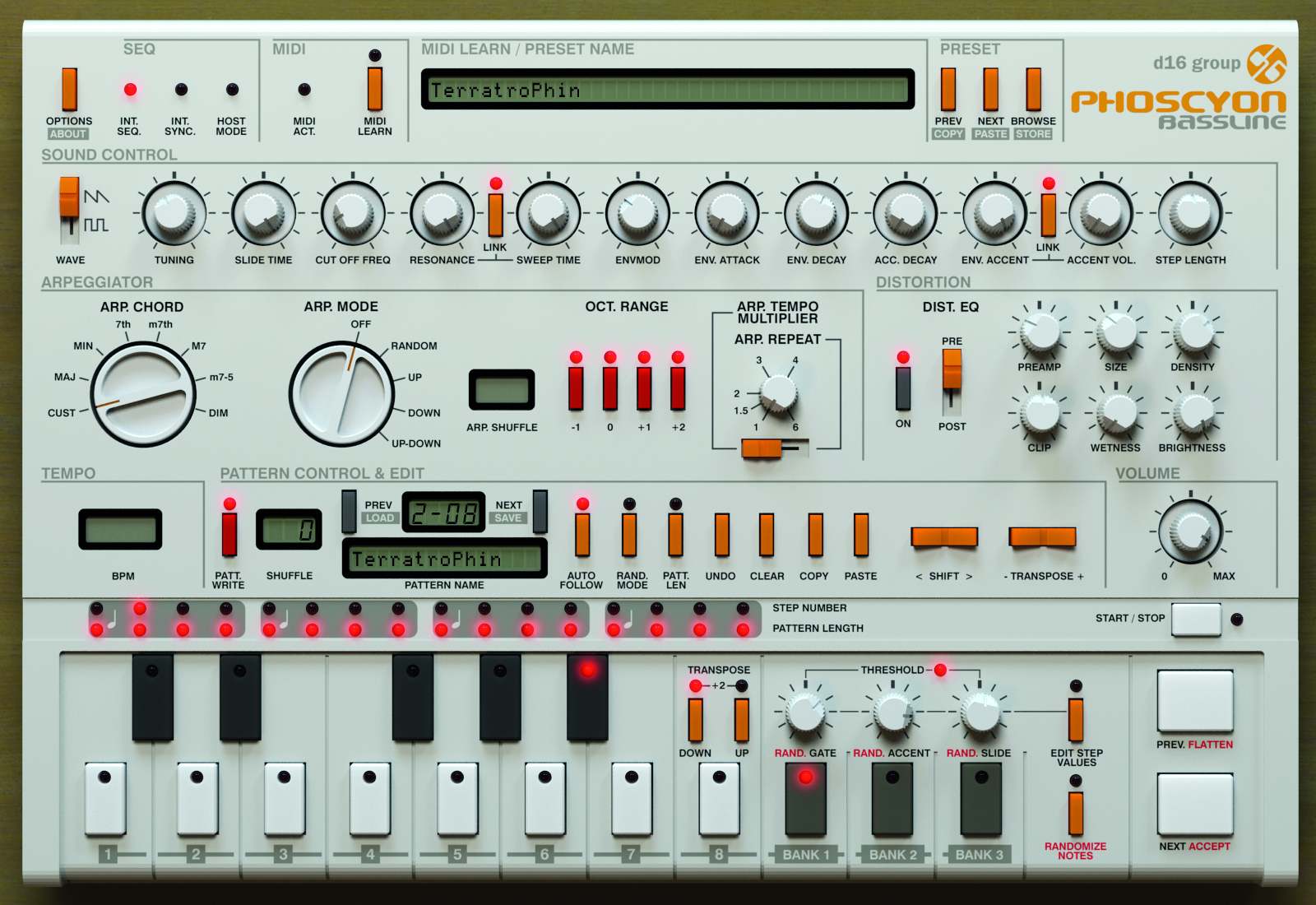
While Roland have maintained the 303 yardstick by which others may be judged, there are plenty of facsimile contenders to suit all styles and pockets. Many artists cite a preference, despite having previously been reluctant to shift their allegiance from the original hardware.
Phoscyon, from D16 software group, harks back to 2006, but it is still a highly respected software incarnation. D16 describe it as ‘…the legendary silver box, rocketed into the future’.
While that may be, Phoscyon maintains the same sonic architecture, with both saw and square waves up front, and an unashamed 18dB/oct filter. Along with the inbuilt sequencer, there is also an incredibly useful arpeggiator, with seven pre-defined modes and one user-defined.
It’s fully controllable via MIDI CC, offering the ability to trigger via DAW or run the internal sequences in sync with your DAW. One area which is usefully exaggerated, is the Distortion section. Equipped with six different pots, you can introduce clipping, brightness and even density, right from within the plugin, for the classic 303 acid sound.
In line with the 303s original ‘accidental’ persuasions, D16 have also included a randomiser, so you can throw that virtual dice and stick, or try again! All of this is available in VST2/AU form for the sensible sum of just €59, directly from their website.
Audiorealism Bass Line 3
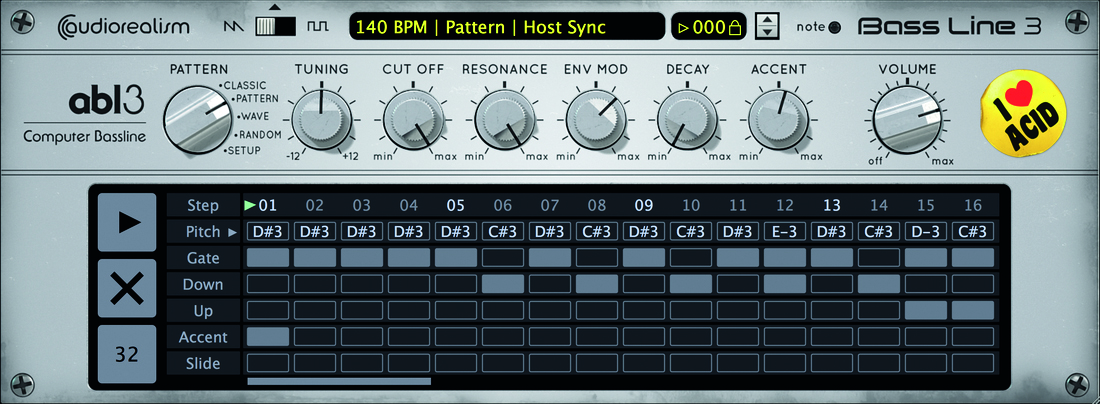
Audiorealism offer another cost effective alternative; Bass Line 3 (ABL3) is another VST2/AU plugin version, which boasts ‘…the most authentic emulation possible.’ For a one-off price of £89, ABL3 allows DAW or sync-based triggering, with an amazingly authentic sound.
However, one aspect that we enjoyed about this plugin is its editor view, which in line with the Roland plugin, makes exceptionally easy work of the step-input-side of the programming.
Thanks to a click-box per step, you can simply punch accents and slides, at the step points where you want them. We also really like the slightly uncluttered form, which clearly bears a resemblance to the original device.
Yooz BL-303
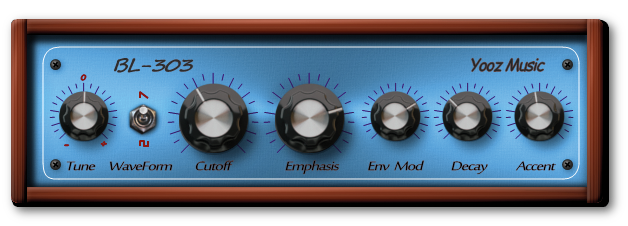
Our final contender comes from Yooz Music and falls into the freeware category. Although the BL-303 lacks an onboard sequencer, it does offer a decent passing resemblance to the original 303’s internal synth circuitry.
Now in its version 2 state, the addition of some clever programming from within your DAW will yield effective 303 imitations. Varying the length of note in your DAW, will alter the nature of the 303’s gate, while the simple alteration of velocity note value will dictate whether elements like accent and slide are present.
It lacks an overdrive circuit, but it does mimic basic 303 elements, controlled through pot variance. Available in plugin form for AU/VST, it’s the perfect budget route to 303 glory.
Which sounds best? Only you can decide...
Given its humble roots, it is hard to overstate the allure of the TB-303. As a bass synth, it’s perfectly adequate, but it does lack the more complicated synthetic architecture found on its brethren, the SH-101.
We have to balance our arguments for and against original TB-303s by breaking things down into three distinct arenas. Firstly; sound. As a basic synth, it sounds very fine, in part due to its diode-ladder filter-based design, which operates in 4-pole/24dB mode.
Many aficionados report that it exhibits a slight quality reduction, closer to 18dB, but this may well be down to component degradation over time. It only offered saw and square wave sound sources upfront, but when you add in the decay-based filter modulation envelope, you have a simple trix-ter which just does what it does.
That is, until you add the second of our elements; the sequencer. Allowing basic step editing of notes, which can be stored as patterns and ultimately chained together to form songs, the onboard note-organiser is notoriously hard to work with, which might explain why so many chose to work with a single bar in a loop or pattern.
If it hadn’t been for its failure within its intended domain, it wouldn’t have been sold off as cheaply and no kids or bedroom producers could have picked them up from the bargain bins, resulting in the groundbreaking genre of acid house
But, it’s the combo of note input, ability to add rests, and then slide from one note to another, that throw open the character of the 303. Synchronising an original 303 to your track was never going to be easy.
There is a 5-pin DIN connector onboard, for an old sync protocol known as Sync 24. It also offers CV and Gate outputs, so if you did manage to grapple the sequencer, you could send those notes to another dimension.
However, if you owned other Roland products from that time, such as the TR-606 Rhythm Composer, you were in luck! Pure synchronisation was a cable away, but even then, it often exhibited issues, such as the lottery of both sequences starting on the first beat at the same time.
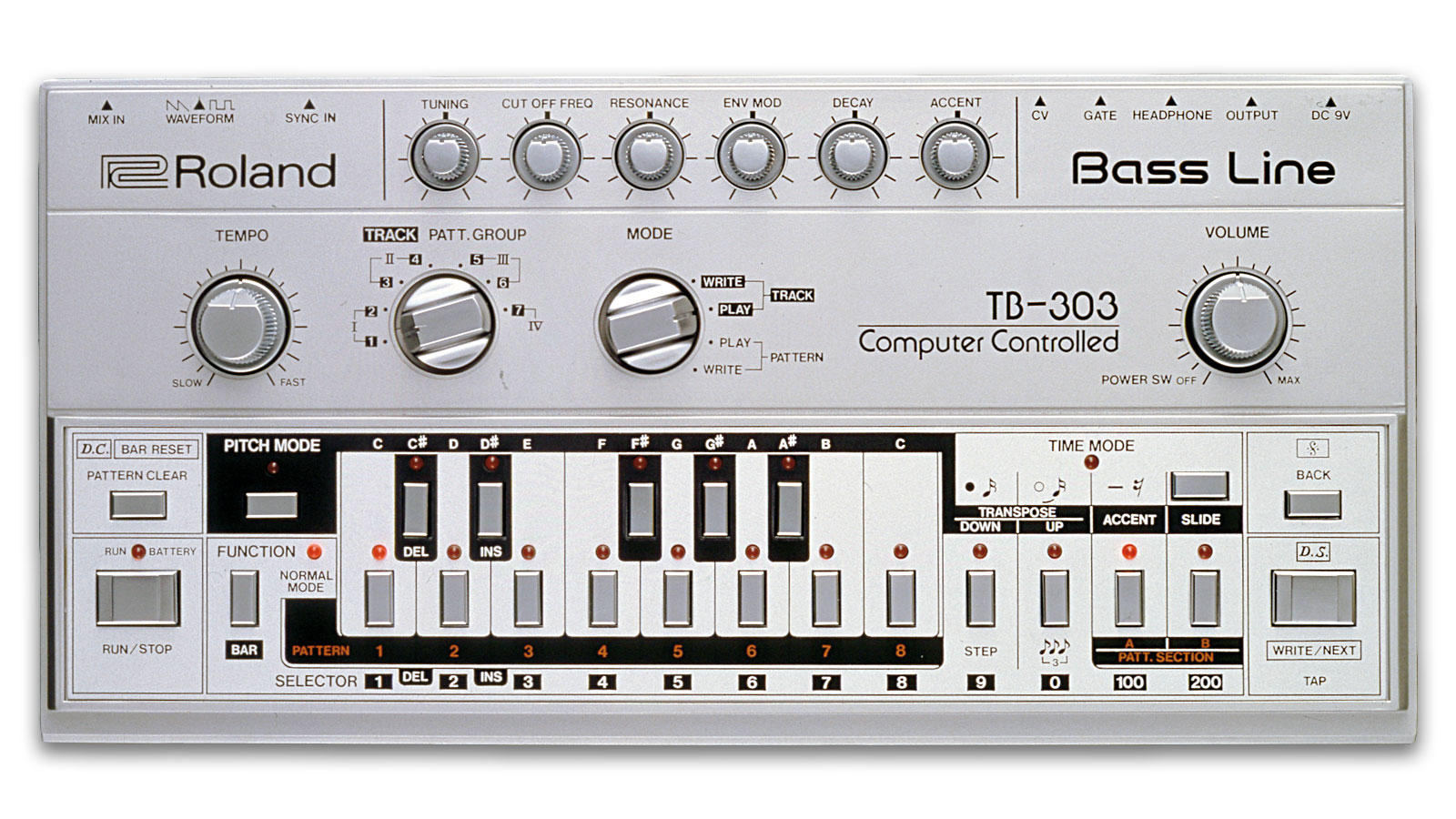
Sync issues aside, you only need to add the aforementioned, envelope-laden filter, and an overdrive or distortion pedal, and you’d gain the iconic sound of the 303. We say iconic, but it never started that way, which leads us to point three; style, genre, time and place!
If it hadn’t been for its failure within its intended domain, it wouldn’t have been sold off as cheaply and no kids or bedroom producers could have picked them up from the bargain bins, resulting in the groundbreaking genre of acid house.
We started our exploration into the 303 by describing it as a machine based around happy accidents. That machine ultimately became the machine of kings! Long live the 303…


Computer Music magazine is the world’s best selling publication dedicated solely to making great music with your Mac or PC computer. Each issue it brings its lucky readers the best in cutting-edge tutorials, need-to-know, expert software reviews and even all the tools you actually need to make great music today, courtesy of our legendary CM Plugin Suite.
“The included sample content is not only unique but sonically amazing, as it always was”: Spitfire Audio BBC Radiophonic Workshop review
“We were able to fire up a bass sound that was indistinguishable from the flavour of New Order’s Blue Monday in seconds”: EastWest Sounds Iconic review





